Founded by Hercules, shaped by the Romans, ruled by the Moors, and finally conquered by the Christians, the 2,200-years-old capital of Andalusia is an architectural wonderland, with styles spanning from Mudejár and Gothic to Baroque and Spanish Renaissance.
From historically significant monuments to dazzling Moorish palaces, these 10 must-see buildings in Seville make sightseeing in the city a fabulous experience.
Seville Cathedral
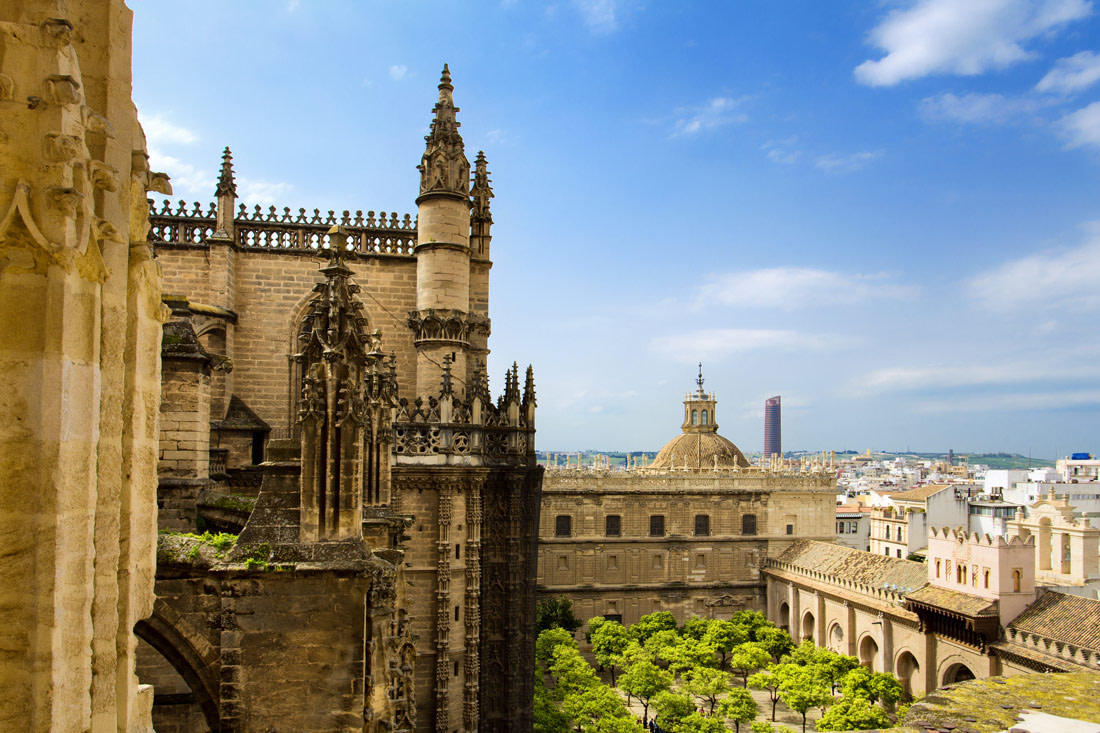
Built during the Reconquest, on the site of a 12th-century Islamic mosque, Santa María de la Sede (as it is officially known) is the largest Gothic cathedral in the world and one of Spain’s most treasured monuments.
A UNESCO Heritage Site, the superb construction covers 7 centuries of history, exhibiting styles and elements from different architectural periods. The only Moorish remains left are the sweet-scented Patio de los Naranjos and the iconic Giralda bell tower, the mosque’s former minaret. Everywhere else, intricate Gothic embellishments stand alongside magnificent Renaissance details, while the spellbinding art treasures inside could rival any fine museum’s collection.
The Cathedral of Seville is located right in the heart of the city’s historic center (Barrio de Santa Cruz) and houses the tomb of Christopher Columbus.
General Archive of the Indies
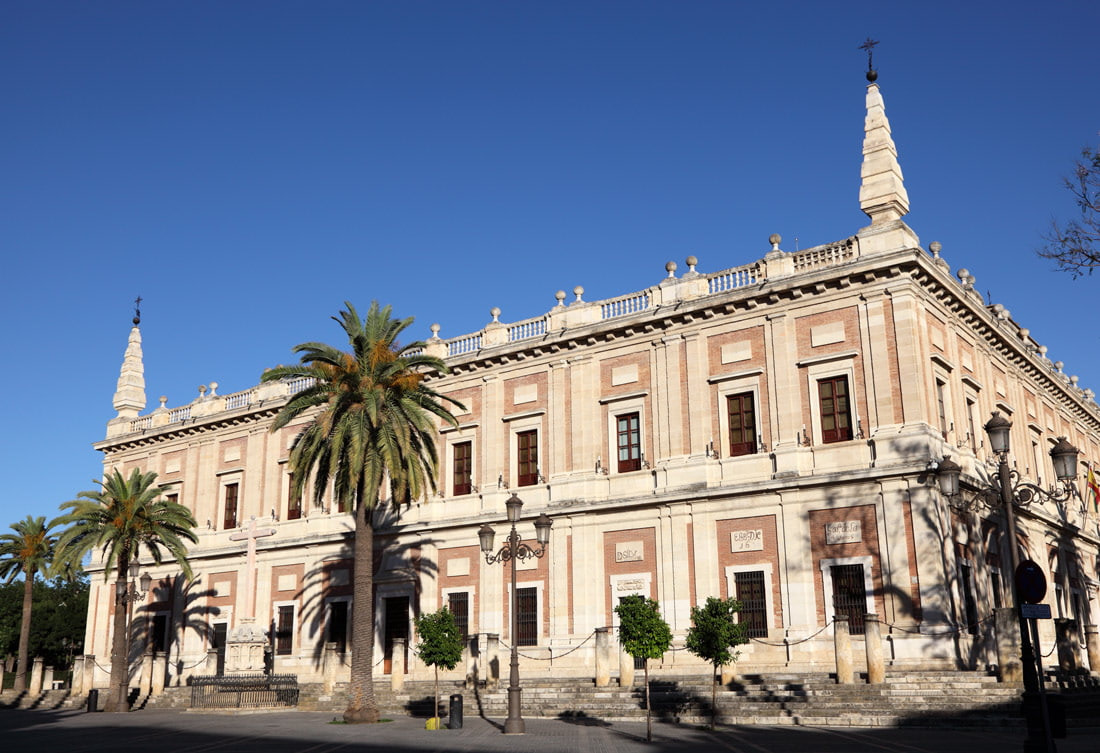
Home to more than 43,000 files that document the discovery of the Americas and the Spanish colonization, Seville’s General Archive of the Indies is mostly praised for its valuable contents. Nevertheless, the perfectly square two-stories building, known as Casa Lonja de Mercaderes, is just as impressive on the outside as it is inside.
Designed by Juan de Herrera, the architect of El Escorial, the symmetrical structure is one of the purest examples of Spanish Renaissance architecture. It revolves around a large central patio, and the glorious red and white marble staircase that connects its two floors is a delight for the eyes.
The Archivo General de Indias is conveniently located between the Cathedral and the Alcázar. Admission is free.
Costurero de la Reina
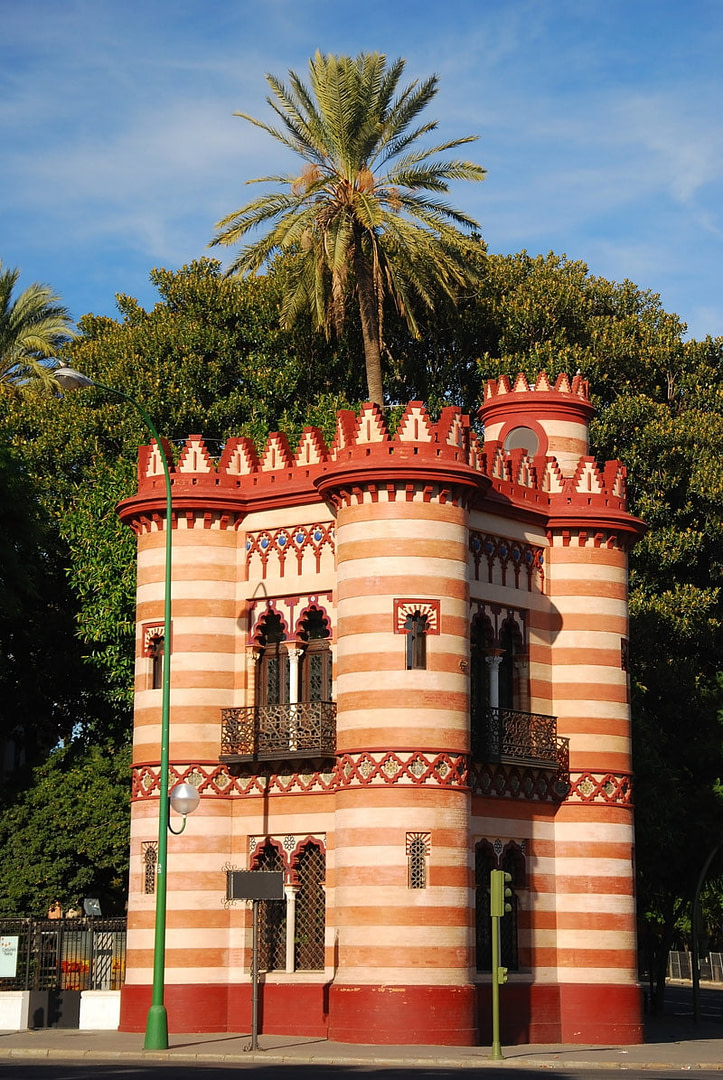
Seville’s first Neo-Mudéjar building, the Costurero de la Reina (Queen’s Sewing Box) resembles a small castle, with little round turrets, Arab style windows, and eye-catching horizontal stripes in the typical colors of Seville.
Built in 1893 by Spanish architect Juan Talavera y de la Vega, the edifice is one of the city’s most unique and unusual constructions. It marks one of the entrances to Maria Luisa Park and serves as a tourist office.
Archbishop’s Palace
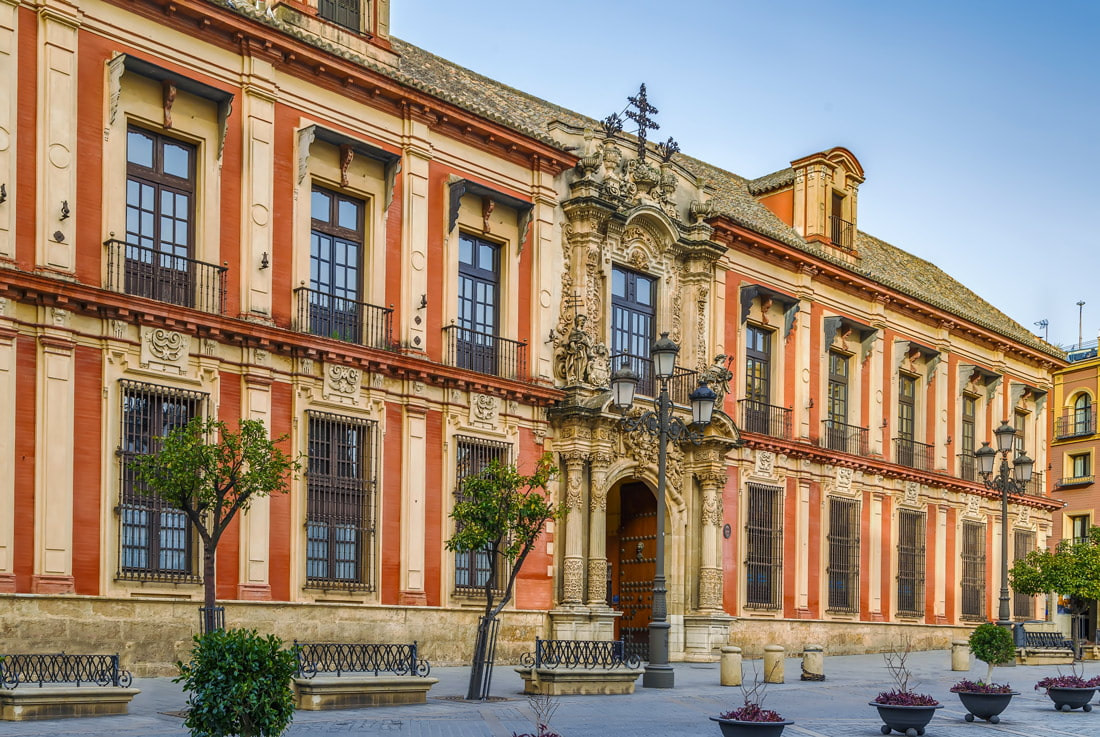
Situated in Plaza Virgen de los Reyes in central Seville, the Archbishop’s Palace is a gem of Spanish Baroque architecture, built around two 16th-century Mannerist style courtyards.
Designed by architect Lorenzo Fernández de Figueroa in 1704, its imposing red façade is adorned with white pilasters and wrought iron balconies, while its grand main portal combines elements such as marble columns, vegetable motifs, and beautiful allegorical statues.
Palacio Arzobispal, as it is called in Spanish, is a National Monument and sits directly opposite the Giralda tower, which makes it perfect for a quick stop on your sightseeing tour.
Hospital de los Venerables
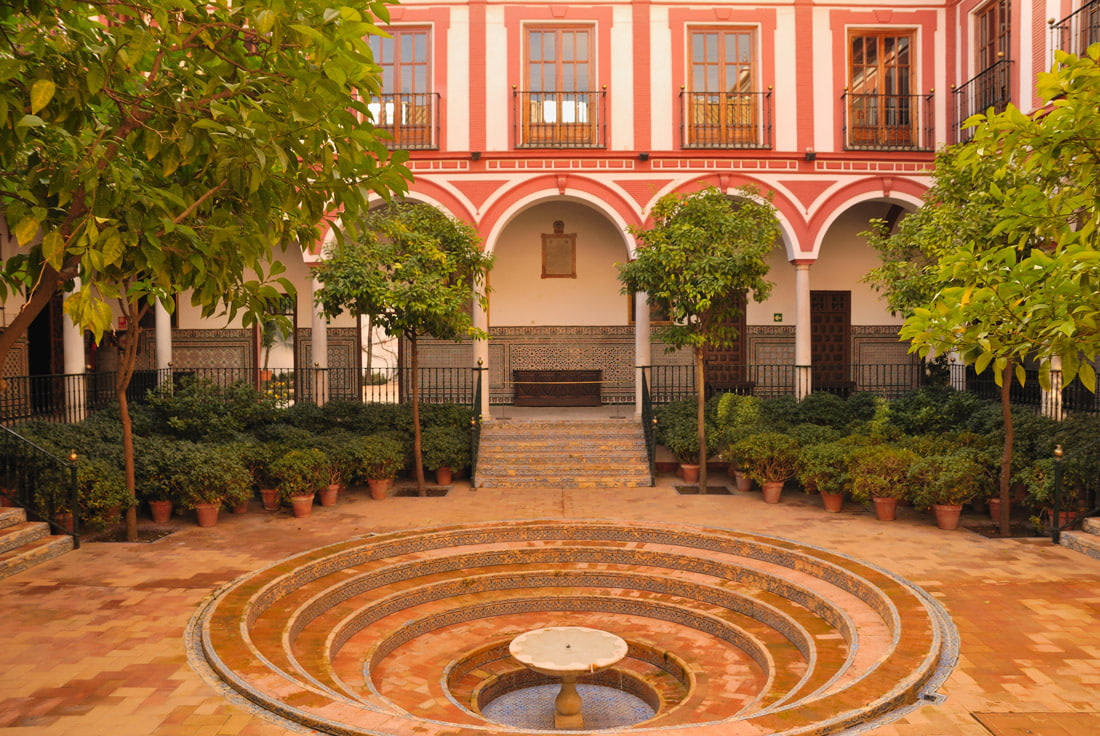
Designed in the 17th century to provide shelter for elderly and disabled priests, the Hospital de los Venerables in Barrio de Santa Cruz is a beautiful example of classic Baroque architecture.
The Hospital is now the headquarters of the Focus-Abengoa Foundation, housing a stunning collection of masterpieces by Diego Velázquez. It also features an exquisitely painted chapel and a charming square-shaped Sevillan patio surrounded by Tuscan arches.
The Alcázar
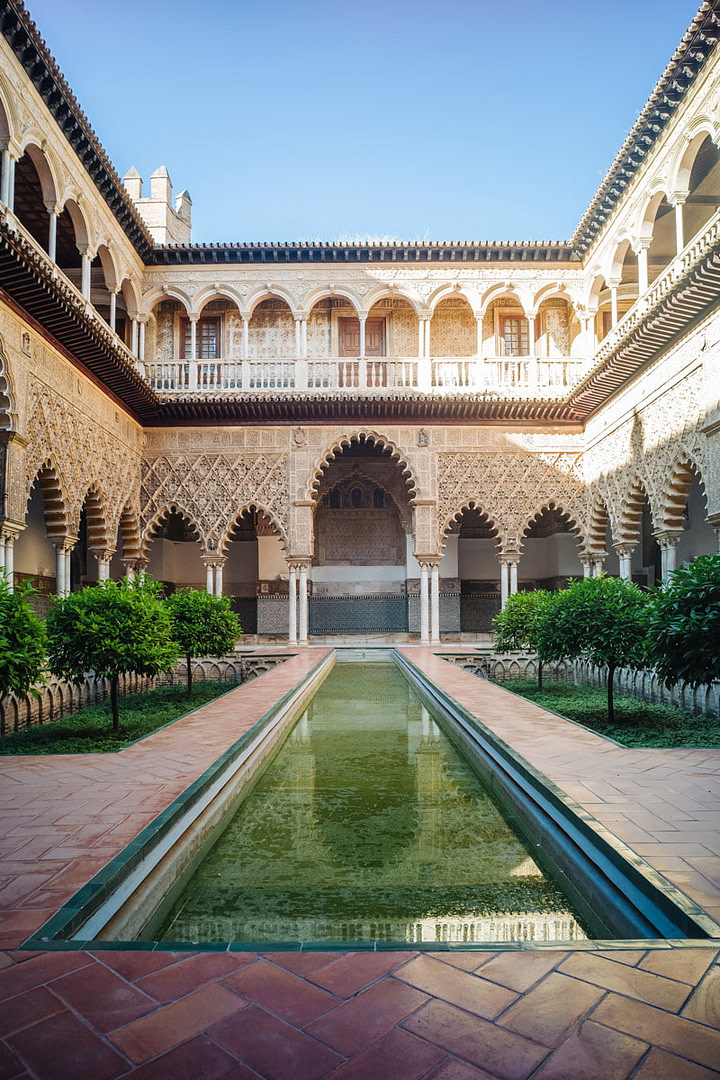
Mixing Moorish, Gothic, Mudéjar, and Renaissance elements, the Alcázar of Seville is, no doubt, one of the world’s most stunning architectural compounds. Although parts of the complex date back to the 1st century, the original Almohad fortress, around which the palace was developed over the last 11 centuries, was constructed in the 10th century for the Moslem governor.
A series of sumptuous buildings, gorgeous patios, and sprawling, tranquil gardens, the monument is the oldest European royal palace still in use, and one of the most outstanding examples of Mudéjar architecture – a mix of Christian and Muslim styles. In 1987, it was declared a World Heritage Site by UNESCO, along with the Cathedral and the General Archive of the Indies.
The Reales Alcázares de Sevilla is located in the city center, near the Jewish Quarter, and served as the residence of Dorne’s rulers (House Martell) in the fifth season of Game of Thrones.
Hotel Alfonso XIII
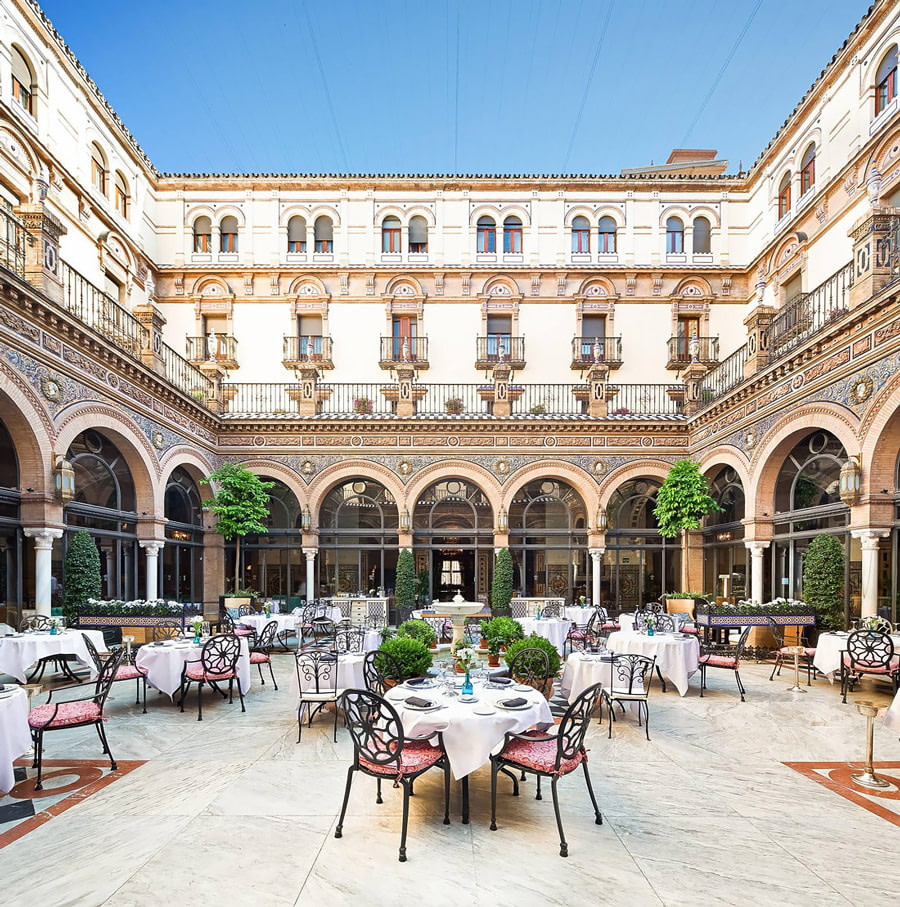
Commissioned by the King of Spain to accommodate the beau monde during the Ibero-American Exposition of 1929, Hotel Alfonso XIII in the historic quarter of Santa Cruz is one of the most remarkable buildings in Seville.
Designed by native architect José Espiau y Muñoz, the historic establishment catches the eyes of passersby with its ornate Neo-Mudéjar architecture, featuring grandiose Arabic-inspired arches, soaring towers, and Renaissance-style windows.
Palace of San Telmo
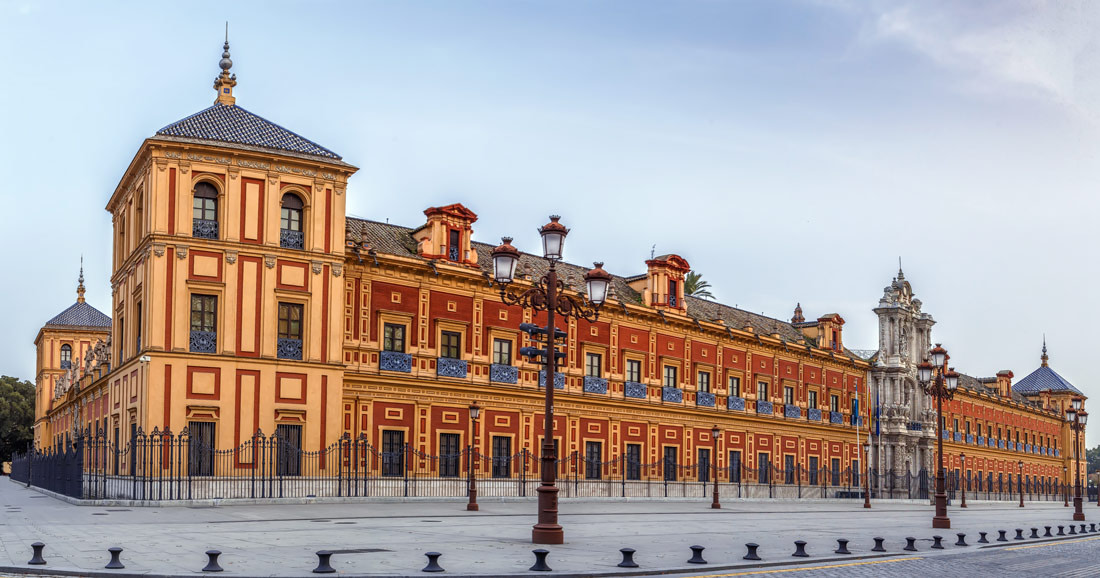
One of the most handsome Baroque buildings in Seville, the Palace of San Telmo stands out for its splendid Churrigueresque entrance, framed by columns and embellished with elaborate statues depicting everything from the city’s patron saints to indigenous people of the Americas.
Also part of the establishment are several interior courtyards, gardens, and an 18th-century chapel designed by Spanish architect Leonardo de Figueroa in exuberant Baroque style.
The palace is the official seat of the presidency of the Andalusian Autonomous Government, and can be found south of the city center, next to the Hotel Alfonso XIII.
Centro Cerámica Triana
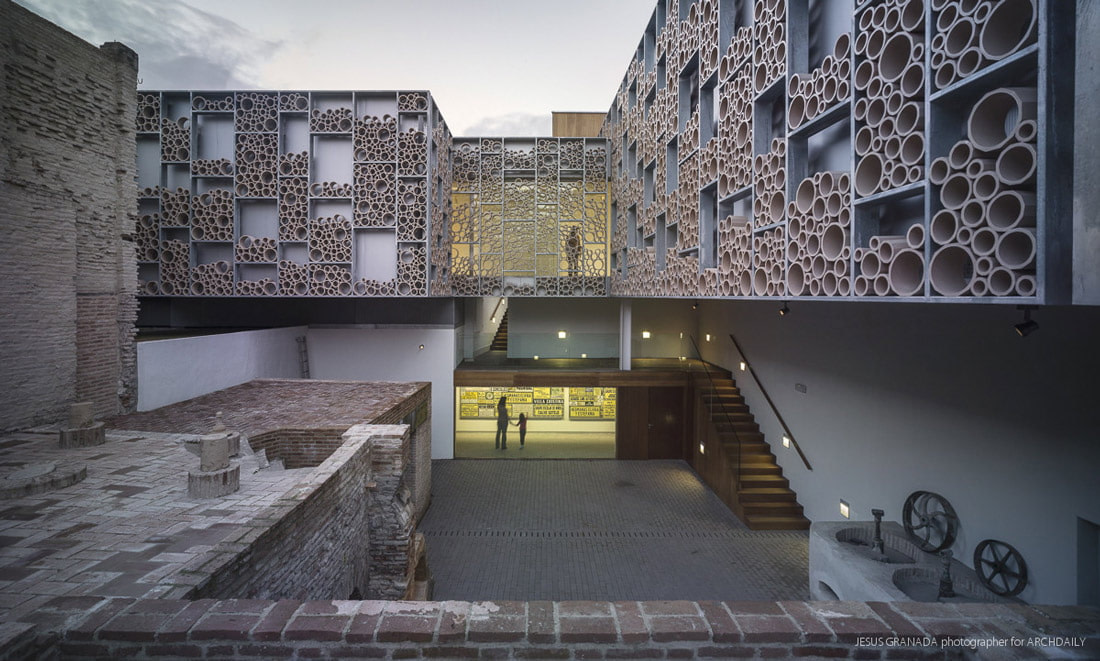
Built on the site of an old pottery factory (Fábrica de Cerámica Santa Ana), the newly opened Triana Ceramic Center fuses traditional and contemporary architectural styles, while still remaining inexorably bound to the culture of this characterful Seville neighborhood.
Its most arresting feature is the inner courtyard façade, whose decorative steel lattice and ceramic sleeves form an exquisite Moorish inspired celosia, meant for the protection from the sun.
A work by AF6 Arquitectos, the museum celebrates the history and tradition of Seville’s iconic azuelos (ceramic tiles).
Torre del Oro
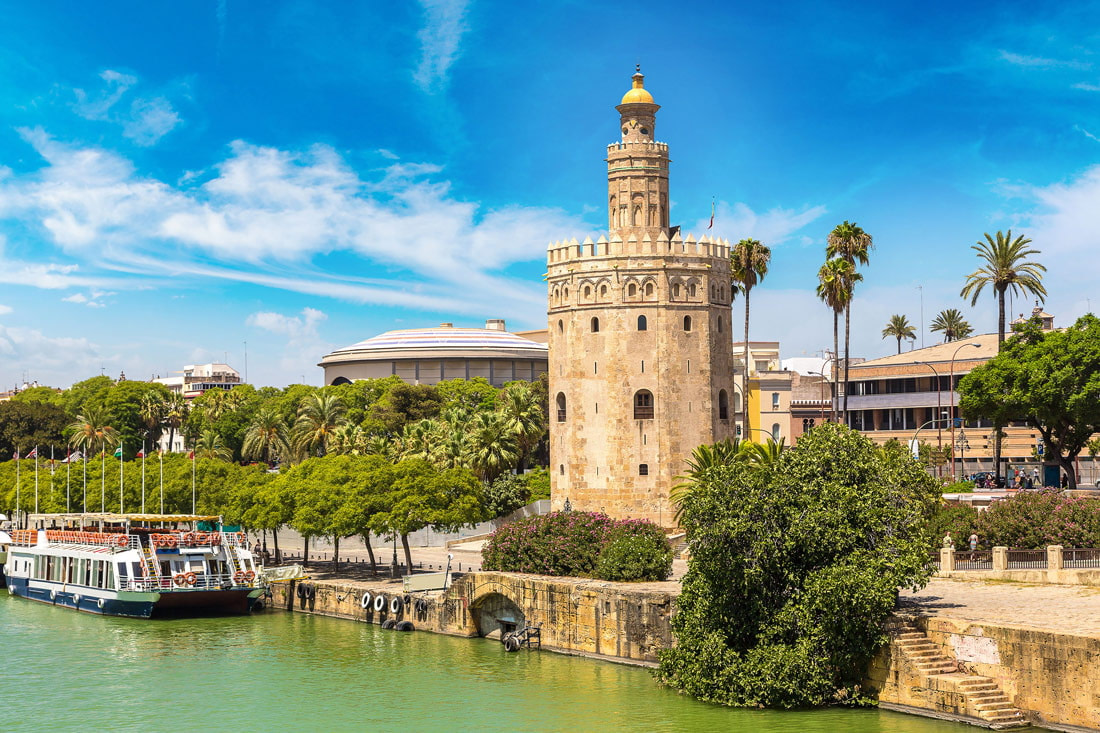
Nestled on the banks of the Guadalquivir river, Torre del Oro is one of Seville’s most photographed landmarks. Part of the city’s fortified walls, it was built in the 13th century, during the Almohad dynasty, in order to control access to the port.
Nowadays, the dodecagonal watchtower plays host to a small naval museum, and its rooftop viewing platform provides a spectacular panorama of Triana across the river.

